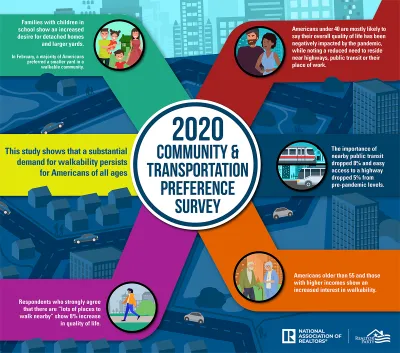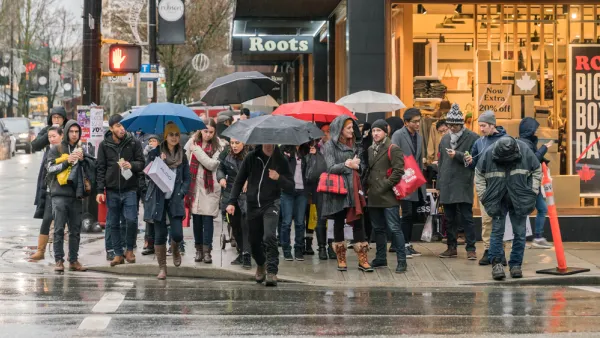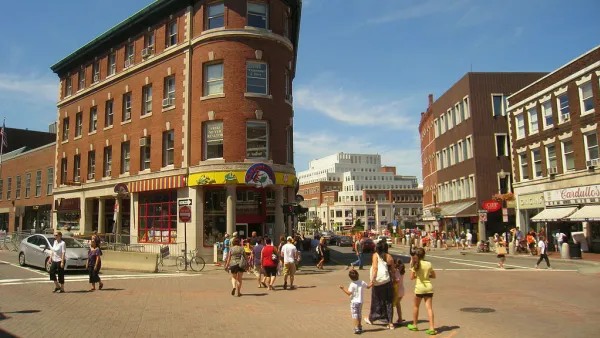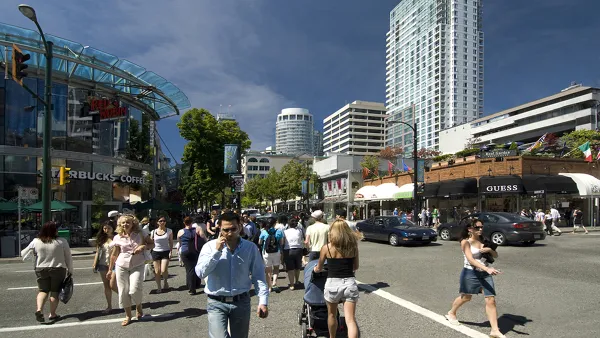The National Association of Realtors' recent Community and Transportation Preference Survey shows that many households prefer living in walkable urban neighborhoods, and those that do have a higher quality of life.

The National Association of Realtors' (NAR) 2020 Community and Transportation Preference Survey investigates how COVID has affected housing and travel preferences. It finds that many households would prefer to live in more walkable neighborhoods, and residents of such areas report a higher quality of life than those who live in less walkable areas.
NAR’s biannual Community & Transportation Preferences Surveys poll residents in America’s 50 largest metropolitan areas. The first 2020 survey was conducted in February, immediately before the impacts of COVID-19 began to be felt, and again at the end of July.
The survey found that Americans under 40 (millennials and Generation Y) are most likely to say their overall quality of life has been negatively impacted by the pandemic, while they also note a reduced need to reside near highways, public transit or their place of work. Although COVID has dramatically changed people’s lives, this study shows that a substantial demand for walkability persists for Americans of all ages,” Malta added.
Among other noteworthy findings of the July survey:
- Respondents who strongly agree that there are “lots of places to walk nearby” show an 8% increase in quality of life.
- Americans older than 55 and those with higher incomes show an increased interest in walkability.
- Families with children in school show an increased desire for detached homes and larger yards.
- The importance of easy access to public transit and highways dropped 8% and 5%, respectively, from pre-pandemic levels.
FULL STORY: Community and Transportation Preference Surveys

National Parks Layoffs Will Cause Communities to Lose Billions
Thousands of essential park workers were laid off this week, just before the busy spring break season.

Retro-silient?: America’s First “Eco-burb,” The Woodlands Turns 50
A master-planned community north of Houston offers lessons on green infrastructure and resilient design, but falls short of its founder’s lofty affordability and walkability goals.

Delivering for America Plan Will Downgrade Mail Service in at Least 49.5 Percent of Zip Codes
Republican and Democrat lawmakers criticize the plan for its disproportionate negative impact on rural communities.

Test News Post 1
This is a summary

Test News Headline 46
Test for the image on the front page.

Balancing Bombs and Butterflies: How the National Guard Protects a Rare Species
The National Guard at Fort Indiantown Gap uses GIS technology and land management strategies to balance military training with conservation efforts, ensuring the survival of the rare eastern regal fritillary butterfly.
Urban Design for Planners 1: Software Tools
This six-course series explores essential urban design concepts using open source software and equips planners with the tools they need to participate fully in the urban design process.
Planning for Universal Design
Learn the tools for implementing Universal Design in planning regulations.
EMC Planning Group, Inc.
Planetizen
Planetizen
Mpact (formerly Rail~Volution)
Great Falls Development Authority, Inc.
HUDs Office of Policy Development and Research
NYU Wagner Graduate School of Public Service





























